The affordable fine jewelry movement is putting a stake in the sand. As ecommerce and the direct-to-consumer market booms, entrepreneurs are disrupting the old industry and rethinking what it means to sell, own, and buy fine jewelry.
Ditching traditional high markups and stuffy showrooms, brandsfinallyoffer fine jewelry at accessible prices and normalize wearing it every day. Shower in it? Totally fine. Sleep in it? Yep.
Yet, the extremely low prices bring up questions of quality and sustainability. We decided to explore the affordable fine jewelry movement to better understand what it is, why it’s happening, and if those low prices are really all they’re cracked up to be.
What is affordable fine jewelry, and why is it a trend?
The direct-to-consumer model has allowed fine jewelry shops to offer pieces at close to the same price points as costume and demi-fine jewelry. But what’s the real difference?

The difference between demi-fine and fine jewelry
Before we get started, let’s establish a couple of definitions. We’re defining affordable fine jewelry shops as ones that sellmanypieces with a price tag under $500.
细jewelry refers to items made with precious metals and precious or semi-precious stones. Most commonly, that means pieces crafted with 10- to 18-karat gold, sterling silver, or platinum. Stones range from sparkly favorites like diamonds, emeralds, and sapphires to colorful choices like topaz, agate, turquoise, and opal.
Demi-fine jewelry most commonly refers to vermeil, plated, and filled pieces. Demi-fine pieces won’t feature expensive gems like diamonds, but often include wallet-friendly options like lab-grown diamonds, white sapphires, moissanite, or cubic zirconia.
Most of this jewelry is made with gold in some capacity. Gold jewelry comes in a few different variations:
Gold-plated jewelry
Gold-plated jewelry is made out of a thin layer of gold atop a base metal. Because of that, the outer coating can wear off over time.
Vermeil jewelry
Vermeil jewelry has a sterling silver base with a thick layer of 10- to 18-karat gold on top. Gold vermeil pieces are often good quality with a lower price tag.
Keep in mind that vermeil means different things to different jewelers, and it’s not standard from country to country either. For example, in Canada, jewelry has to be plated with only one micron of goldto be marketed as vermeil. The United States requires vermeil jewelry to have plating that’s 2.5 microns thick.
Gold-filled jewelry
Gold-filled jewelry is made of a thick layer of gold bonded to a base metal. At least 5% of the weight of each piecemustbe solid gold.
Solid-gold jewelry
Solid-gold jewelry is exactly what it sounds like: solid. In order to be considered solid gold, it must be at least 10 karats.

Trending now: 14 karats for less
Once entrepreneurs found the opportunity to offer precious metals and stones at affordable prices, others caught on, offering more options for consumers looking to treat themselves than there had ever been before.
Perhaps the most well-known champion of the affordable fine jewelry trend is Mejuri, the Canadian brand that’s developed a cult following for its simple 14-karat gold and diamond designs.
According to an article inForbes, “The magic that Mejuri created is a movement, one where women are self-gifting (which is inspired by the fact that women are making their own buying decisions and fueled by female empowerment) and one where fine jewelry is for every day, not for occasions.”
Whether Mejuri was the catalyst that sparked the movement or the trend grew in parallel among many entrepreneurs that were sick of the old ways, today the affordable fine jewelry trend is in full swing.

The emergence of the affordable fine jewelry movement
细jewelry has long been unattainable to the masses because of its price point. In the past few years, many entrepreneurs have seen this as a golden opportunity.
That was the case forAprès Jewelryfounder Amanda Thomas.Amanda writes on the Après website订婚后,“真的搜索market for chic and affordable fine jewelry for my wedding, I was shocked at how scarce the options were. I really wanted to fill the gap and create amazing engagement rings and wedding bands that were substantial and didn’t break the bank.”
Après has done just that, offering engagement rings as low as $1,100. Customers can set their budget and choose from a range of center stones from morganite to natural diamonds that fall within their desired stone size and price range.
The brand also offers fine earrings, necklaces, and bracelets made for everyday wear. And because its pieces are made of solid gold, customers never have to take their favorites off.
These entrepreneurs saw the need for more affordable fine jewelry options, and opened up shops to meet that demand.
Sharing a similar origin story, Vrai (originally Vrai & Oro) emerged in 2014 and has developed into a digital-first direct-to-consumer jewelry business focused on lab-grown diamonds. We聊天的创始人之一, Vanessa Stofenmacher, back in 2016. Her take was similar to Amanda’s: “No one is really taking a stance and doing anything about this and bringing essential fine jewelry, high quality jewelry, at an attainable price.” These entrepreneurs saw the need for more affordable fine jewelry options and opened up shops to meet that demand.
The target market has reacted with exuberance.
What was once only attainable for major life moments (a wedding, big anniversary, birth of a child) has now become available to teens saving up their babysitting money; for couples who wanted the look of a two-carat diamond ring but couldn’t afford the price tag; for people who want to wear simple gold jewelry while taking a run or doing the dishes, but felt worried that the affordable items would tarnish. These brands have created an entirely new market out of an old industry saturated with tradition.

How the direct-to-consumer model allows brands to keep prices low
There is a large difference in pricing between affordable fine jewelry brands and other jewelry companies. The same diamond solitaire necklace might sell for $185 at one shop and $680 at another. This doesn’t necessarily signal a difference in quality, but in the type of distribution.
Most affordable fine jewelry brands operate under a direct-to-consumer model, and many are digital-first. That means that without the obligation to pay a fee to a larger retailer to carry their products, shops are free to set their own prices. Better margins for the shop means they can pass those savings on to customers.
Stone and Strand, an affordable fine jewelry shop started in 2013, built its entire mission on this model. It allows customers to indulge in “expensive taste without the mark-up.” Creating jewelry at the same factories as its Fifth Avenue New York competitors, the brand deliberately chooses to keep prices low so that its pieces are accessible to all.
Particularly noteworthy is Stone and Strand’s use of 10-karat gold in the majority of its fine pieces. Ten-karat gold contains 41.7% gold, and while it’s less pure than 14-karat (58.3%) and 18-karat (75%) gold, it’s the most durable of the bunch. Using this as the base metal in its fine-made jewelry collection means pieces will cost lessandbetter withstand the bumps and scratches that come with everyday life—a win-win for Stone and Strand customers.
Stone and Strand also offers engagement rings for less by grouping small diamonds together to appear as a larger stone. ItsMia ring, for example, has a total carat weight of .5, with a .2-carat center stone. The overall effect is similar to that of a large pear-shaped stone, at a fraction of the cost.

Sustainability, recycled gold, and longevity
With some affordable fine jewelry makers dropping new styles weekly, and at prices so low that customers can buy multiple pieces, there’s an open concern as to whether these businesses are sustainable.
While it’s difficult to give a blanket answer here, many affordable fine jewelry businesses have committed to sustainability in some form. Many brands choose to work with recycled gold. Stone and Strand, for example, has made a commitment to sustainability by crafting with recycled goldandensuring that all shipments are carbon neutral. Others opt to sell vintage or estate jewelry alongside their own collections, breathing new life into old pieces that otherwise might sit in storage.

细jewelryshouldlast forever, which means that items can be passed down for generations, or melted down to create something new, eliminating the possibility of waste. Fine pieces can also be repaired, while many costume options can’t.
While fast fashion items—cheap, mass-produced clothing items that follow trends—are often purchased to scratch an itch or get in on a moment, fine jewelry is usually seen as aninvestment purchase.
If you’relooking to start (or you already have) your ownjewelry brand, you can make an impact by keeping your business sustainable. Think about:
- Being as transparent as possible.List out where and how you source stones, share how your brand has sustainable practices like using recycled/vintage materials, etc.
- Working with ethical suppliers of raw materials.Even if your business has sustainable and ethical practices, you should ensure that’s the same for the people you work with too.
- Offsetting your carbon footprint.Can you buy carbon credits or offer an option where customers can pay extra to offset their shipment at checkout? Even allowing customers to check out withShop Pay can help plant trees.

Suitable for every day
The other major pivot that innovative jewelry brands are making is the transition from “only special occasions” to “suitable for every day.” Generally speaking, fine jewelry was reserved for black tie events, that once-a-year holiday bash, or your wedding.
Now, shops are encouraging the daily wear of essentials. The reason? First, solid gold or platinum jewelry is significantly more durable than plated or vermeil jewelry. Wear your gold and diamond hoops every day and they won’t tarnish, fade, or turn your earlobes green. Second, if you have nice jewelry, why leave it in a jewelry box collecting dust?
This switch brings dynamic change to the old market, opening doors forentrepreneurs looking to create new trendswithin fine jewelry. As more jewelers discover how to keep items at an affordable price, they open the door to an entirely fresh customer base, one that never thought they could purchase these types of high-end items before. It also means that those who already buy fine jewelry might become repeat customers, as they’ll be able to purchase more beautiful handcrafted jewelry options for every day.
5 direct-to-consumer jewelry brands to check out
由耐用的材料像纯金一样,diamonds, or sapphires, fine jewelry stands up to everyday wear. These direct-to-consumer jewelry brands are notable for their price points and designs. They’re worth taking a peak at whether you’re looking to start your own business or you’re just in the market for something sparkly.
1. Bychari
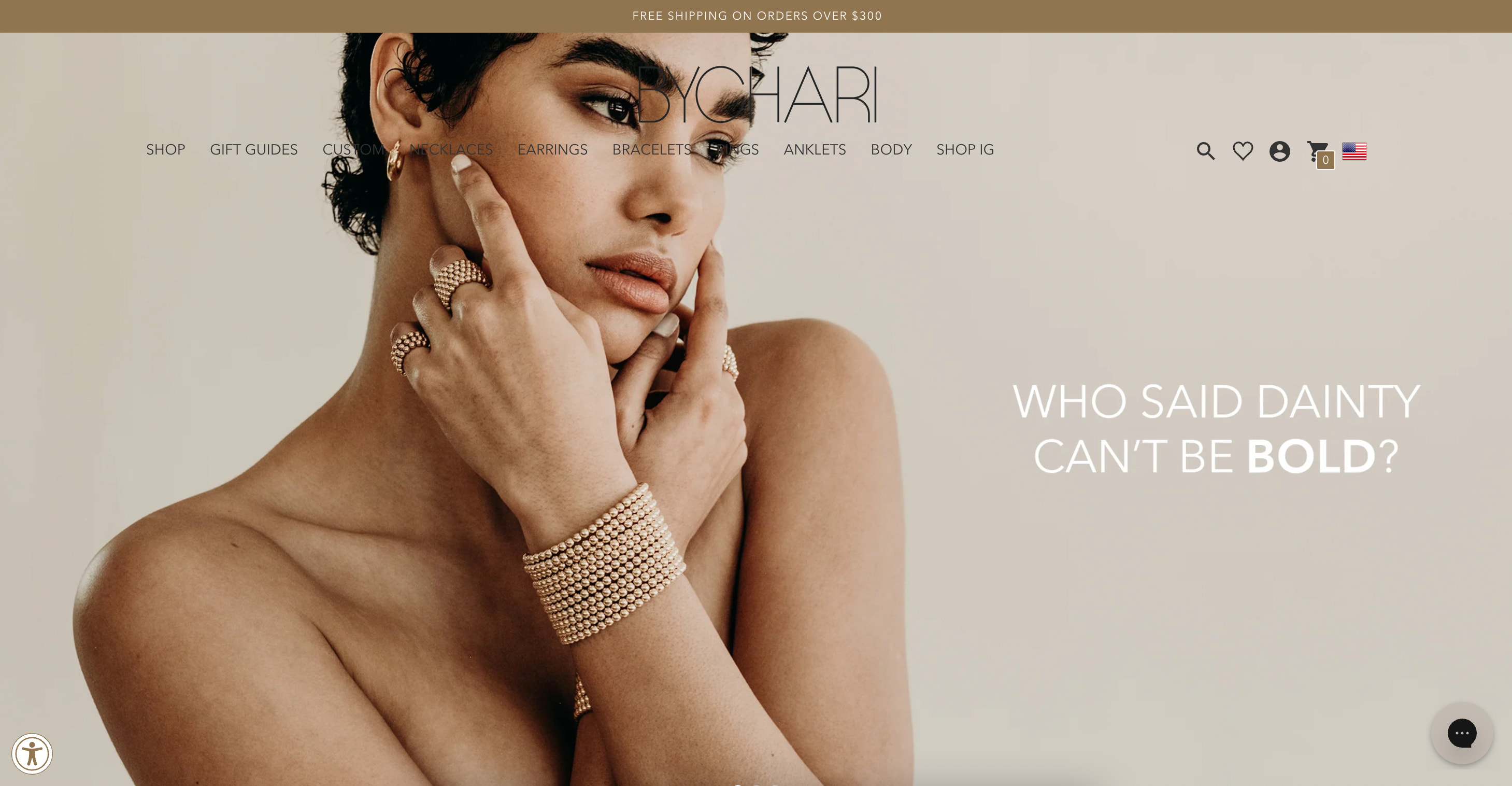
Bycharicreates delicate jewelry that’s understated and perfect for everyday wear. Its simple pieces are easy to integrate into any outfit, whether that’s jeans and heels for a date night out or your favorite yoga pants and t-shirt. The brand is perhaps the most well known for its spaced letter necklaces, where customers can customize a name or phrase and add diamonds in between.
2. Ferko’s
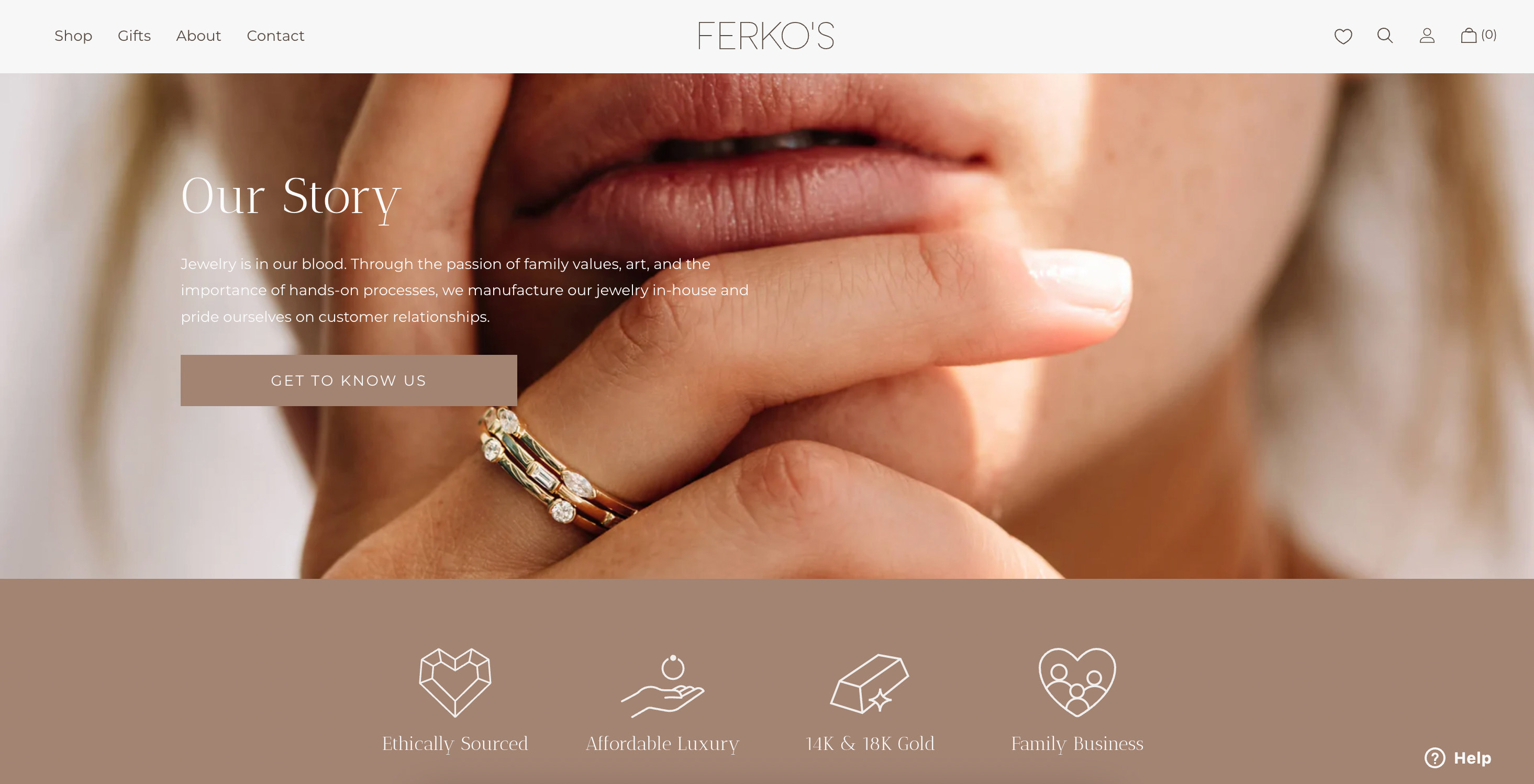
Jewelry brandFerko’shas an extensive collection that caters to multiple styles and price points. It sells many uber-affordable pieces without compromising on quality, like diamond tennis bracelets or solitaire necklaces. The brand only offers solid gold jewelry, but shoppers can choose between 14 karat and 18 karat white, rose, or yellow gold.
3. Stone and Strand
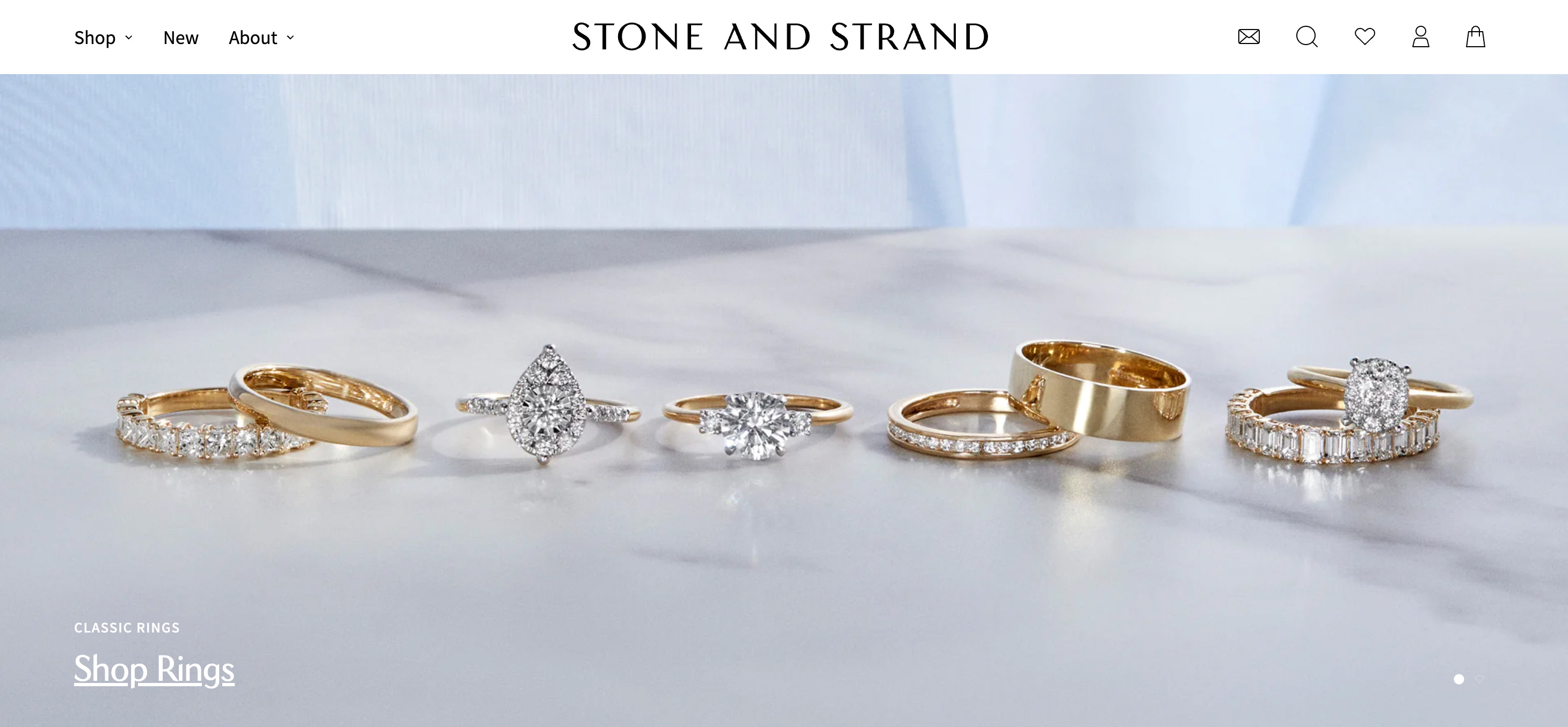
Stone and Strandalso believes in fine jewelry without sky high markups. Rather than charging the same prices as other Fifth Avenue brands, Stone and Strand creates its handcrafted jewelry in the same factories but ditches the high price tags. That doesn’t mean sacrificing on quality! Check out this store for more affordable wedding bands and engagement ring options.
4. Kinn
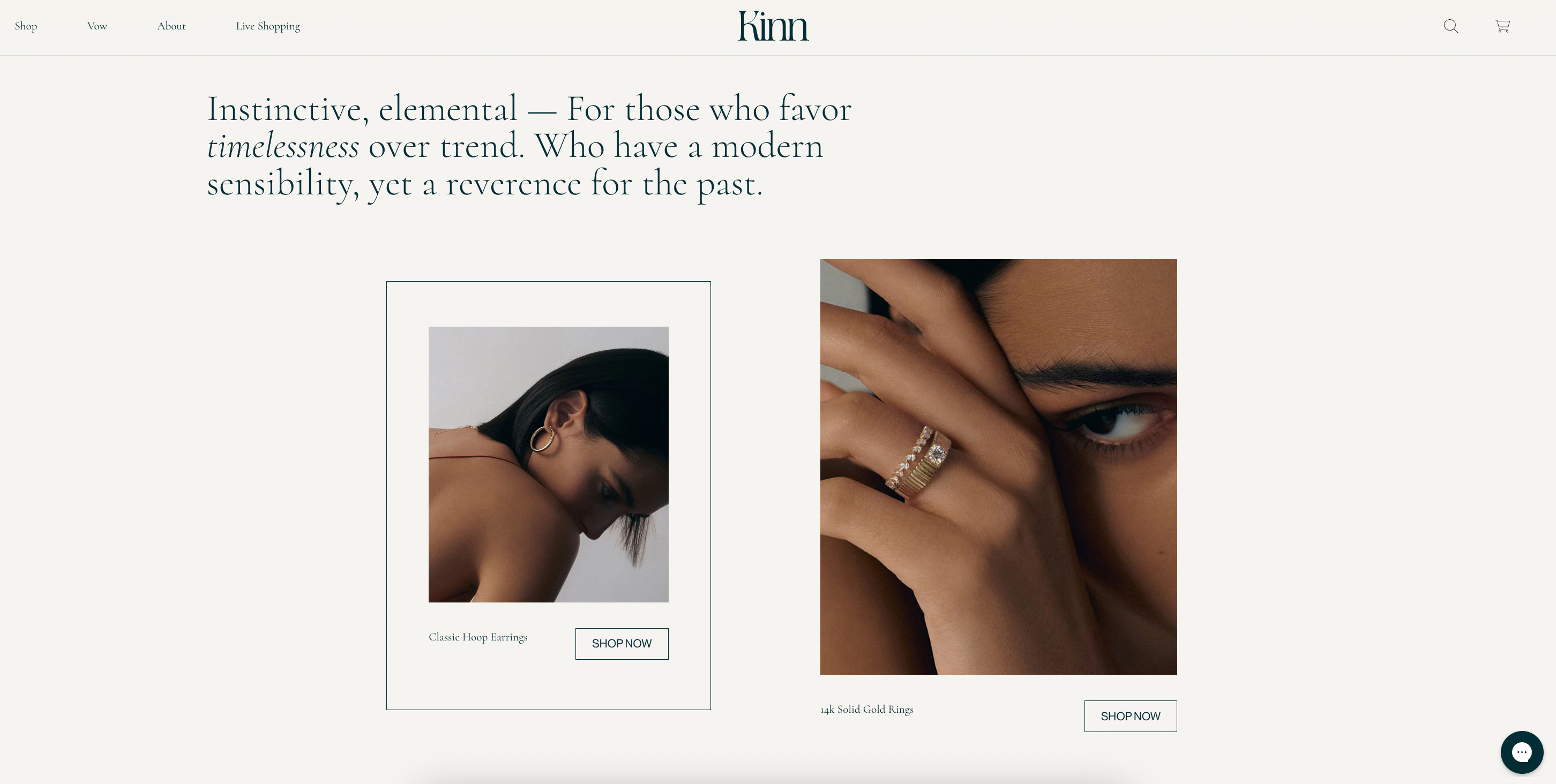
Kinncreates modern heirlooms. Instead of leaning into trending moments, Kinn aims to sell pieces—like wedding rings, earrings, and necklaces—that stand the test of time. Modern silhouettes, hard lines, and bold shapes define the Kinn style. The brand only offers solid gold pieces with a focus on high craftsmanship and sustainability.
5. Aurate
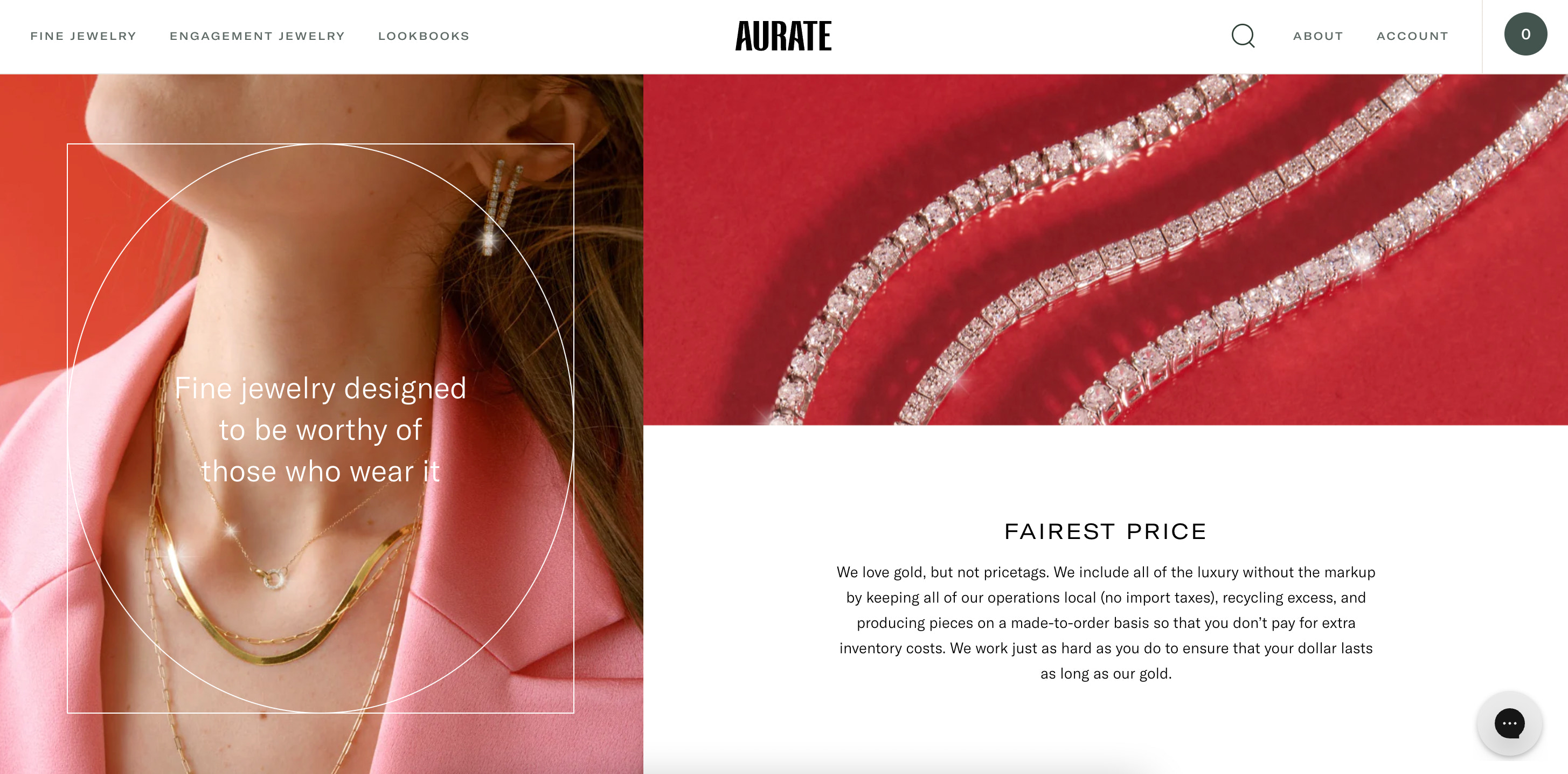
Aurate New Yorkis another direct-to-consumer fine jewelry brand with an extensive catalog. From simple hoop earrings to a tennis bracelet made with more affordable lab-grown diamonds, the shop offers pieces in both solid gold and vermeil options.
Feature image by Joseph Saraceno


